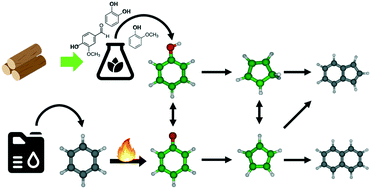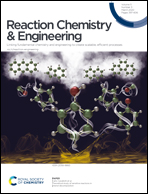Theoretical study of sensitive reactions in phenol decomposition†
Abstract
The reactivity of phenol is of utmost importance in combustion systems. In fact, phenol is the simplest phenolic compound, abundant in bio-oils derived from biomass fast pyrolysis and therefore included as a reference component in bio-oil surrogate mixtures. Phenol is also relevant to the mechanism of oxidation of benzene, a building block in the growth of polycyclic aromatic hydrocarbons (PAHs), precursors of soot formation. Hence, in a modular and hierarchical approach to combustion chemistry, the knowledge of the pyrolysis and combustion kinetics of phenol is essential to characterize the reactivity and the combustion properties of bio-oils and mono aromatic hydrocarbons (MAHs), as well as to improve the understanding of PAHs and soot formation. Although the reaction pathways of phenol decomposition are well defined in the literature, the rate constants still require more accurate assessment, and a validation of the reaction mechanism of phenol pyrolysis against the full set of experimental data available is still missing. In this work, we compute with the ab initio transition state theory based master equation (AI-TST-ME) method the rate constants of the main reaction pathways of phenol decomposition, also relevant to benzene oxidation. In particular, we investigate phenol molecular decomposition to C5H6 + CO and its competition with the O–H bond fission and H-atom abstraction reactions by H to form the phenoxy radical (C6H5O). We also investigate the successive decomposition of C6H5O to C5H5 + CO and the H-atom abstraction reaction on C5H6 by H, which plays a pivotal role in controlling the H concentration in phenol pyrolysis and combustion. The calculated rate constants are found to be in good agreement with experimental values. The CRECK kinetic model is updated with the new rate constants and validated against the available experimental data of phenol pyrolysis providing, to our knowledge, the first comprehensive validation of phenol decomposition kinetics. However, discrepancies are still present in the profiles of products formed from secondary reactivity. Our analysis suggests that further investigation of the reactivity of C5H6 is required, providing guidelines for a more accurate characterization of the decomposition to smaller species.



 Please wait while we load your content...
Please wait while we load your content...